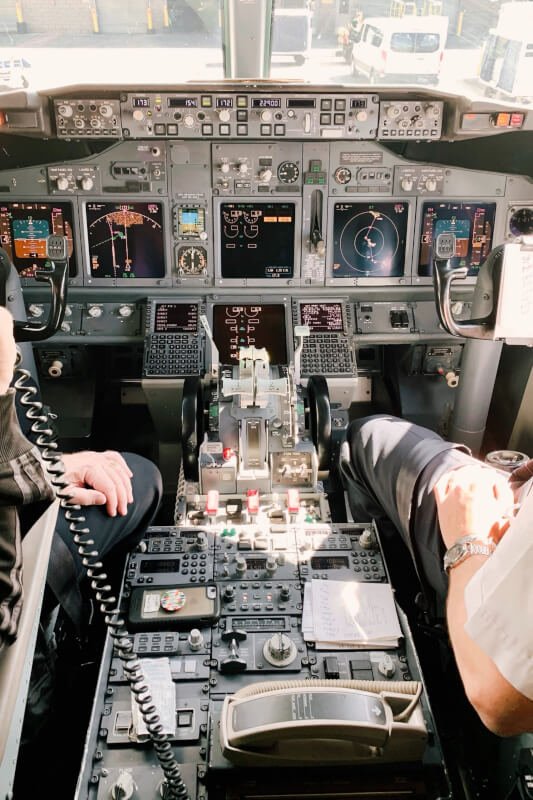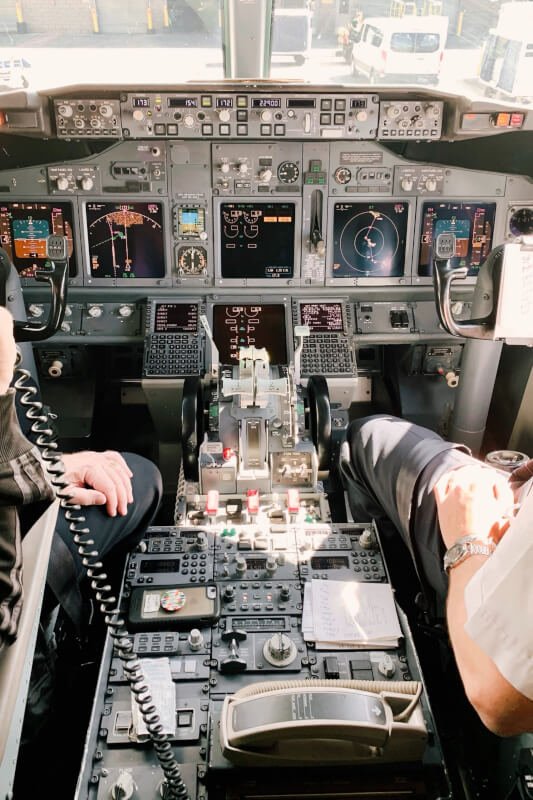So you’ve had a little mishap with your beloved RC aircraft, and now you’re left wondering how to fix it. Whether a crash, a rough landing, or just wear and tear, damaged parts are inevitable for any RC enthusiast. But fear not, because in this article, we’re going to show you exactly how to replace or repair those damaged parts on your RC aircraft. Strap in and get ready to get your bird back in the sky!

Identify the Damaged Part
When you notice damage on your RC aircraft, the first step is to identify the specific part that needs repair or replacement. This can be done through visual inspection and a functional test.
Visual Inspection
Take a close look at your RC aircraft to visually identify any visible damage. Look for cracks, breaks, or any other signs of wear and tear. Inspect each component carefully, including the propeller, landing gear, wings, tail assembly, and receiver board. Identifying the damaged part is crucial in determining the next steps for repair or replacement.
Functional Test
In addition to the visual inspection, conducting a functional test is important to identify any underlying issues that may not be immediately visible. Test the aircraft’s various controls and components to ensure they are functioning properly. If you notice any abnormalities in the performance or operation of your RC aircraft, it can help pinpoint the damaged part that requires attention.
Determine Repair or Replacement
Once you have identified the damaged part, the next step is to assess whether it can be repaired or needs to be replaced. Consider three key factors: the severity of the damage, the availability of spare parts, and cost considerations.
Severity of Damage
Evaluate the extent of the damage to determine if it can be effectively repaired. Minor cracks or breaks can usually be repaired, while major structural damage or irreparable components may require replacement. Assessing the severity of the damage is crucial in making an informed decision on the best course of action.
Availability of Spare Parts
Check if the required spare parts are readily available. Contact the manufacturer or local hobby shops to inquire about the availability of the specific component you need. If the part is easily obtainable, it may be more feasible to opt for a replacement rather than attempting a repair.
Cost Considerations
Consider the cost of repairing versus replacing the damaged part. Evaluate the expenses involved in purchasing the necessary tools, materials, and spare parts for a repair. Compare this with the cost of purchasing a new component or even a replacement RC aircraft. Depending on the extent of the damage and the associated costs, it may be more cost-effective to replace rather than repair the damaged part.

Repairing Damaged Parts
If you have determined that the damaged part can be repaired, follow these steps to fix it properly and effectively.
Gather Required Tools and Materials
Before starting the repair process, gather all the necessary tools and materials. This may include adhesives, screwdrivers, pliers, sandpaper, and any specific materials recommended by the manufacturer for repairing the particular component. Having everything you need at hand will make the repair process smoother and more efficient.
Follow Manufacturer’s Instructions
Always refer to the manufacturer’s instructions or user manual when repairing a damaged part. Following the recommended repair procedures ensures that you do not unintentionally cause further damage or compromise the performance of the component. The manufacturer’s instructions usually provide step-by-step guidance for repair, so make sure to read and understand them thoroughly before proceeding.
Fixing Cracks or Breaks
If the damaged part has cracks or breaks, you can repair them using suitable adhesives. Apply the adhesive to the damaged area, ensuring proper alignment and contact between the broken pieces. Use clamps or tape to hold the parts together until the adhesive fully cures. Allow sufficient time for the adhesive to dry and harden before testing the repaired part.
Reinforcing Weak Points
In some cases, reinforcing weak points can help prevent future damage and increase the overall durability of the component. This can be done using additional adhesives, fiberglass cloth, or carbon fiber reinforcements. Follow the manufacturer’s recommendations on reinforcing specific areas that are prone to damage or stress.
Reattaching Loose Components
If the damaged part involves loose or detached components, take care to ensure proper reattachment. Use the appropriate connectors, fasteners, or adhesives to secure the components in their correct positions. Pay attention to proper alignment and ensure a secure and stable reattachment to avoid any further issues.
Replacing Damaged Parts
If the damage is beyond repair, or if you determine that replacement is a more viable option, follow these steps to replace the damaged part.
Ordering the Correct Part
Identify the correct replacement part needed for your specific RC aircraft. Contact the manufacturer or a reputable hobby shop to order the exact part required. Providing the model number or specifications of your RC aircraft will help ensure that you receive the correct replacement component.
Removing the Old Part
Carefully remove the damaged part from your RC aircraft. Follow the manufacturer’s instructions or guides to safely detach the old component. Take note of any connectors, fasteners, or wiring that may need to be disconnected or removed in the process.
Installing the New Part
Once you have the replacement part, carefully install it according to the manufacturer’s instructions. Make sure all connectors, fasteners, and wiring are properly secured and aligned. Take extra care during installation to avoid causing any additional damage to the RC aircraft or the new component.
Testing the Replacement
After replacing the damaged part, it is crucial to test the functionality and performance of your RC aircraft. Turn on the power and carefully observe if all controls and components are functioning as expected. Take a test flight, if possible, to ensure that the replacement part has been successfully installed and integrated into the overall system.

Commonly Replaced Parts
Certain parts of an RC aircraft are more prone to damage and may require replacement more frequently. Here are some commonly replaced parts that you may encounter during your RC aircraft ownership:
Propeller
Propellers are essential components of any RC aircraft and are relatively easy to replace. They can easily become damaged due to crashes, collisions, or general wear and tear. Always keep spare propellers on hand, and replace them whenever they show signs of damage or are no longer functioning optimally.
Landing Gear
Landing gear is another component that is susceptible to damage, particularly during rough landings or crashes. Cracked or broken landing gear can impair the stability and proper functioning of your RC aircraft. Replacing landing gear usually involves detaching and attaching the old and new components, ensuring a secure and stable installation.
Wings
The wings of an RC aircraft are subject to various stresses and are prone to damage. Crashes, collisions, or structural failure can result in damaged or broken wings. Replacing wings may involve more complex procedures, including detaching and reattaching wires, connectors, and other associated components. Refer to the manufacturer’s instructions for specific wing replacement guidelines.
Tail Assembly
The tail assembly, including the horizontal stabilizers and rudder, is responsible for controlling the stability and maneuverability of your RC aircraft. If any of these components become damaged, it can significantly impact the aircraft’s performance. Replacing the tail assembly may involve disconnecting and reconnecting wiring, as well as aligning and securing the new components properly.
Receiver Board
The receiver board, also known as the flight controller, is a crucial electronic component that receives and processes control signals from the transmitter. If the receiver board malfunctions or becomes damaged, it can result in the loss of control or erratic behavior of your RC aircraft. Replacing the receiver board may require advanced knowledge of electronics and wiring, so it is recommended to seek professional help or consult with experienced individuals for this task.
Troubleshooting Tips
If you encounter any issues with your RC aircraft, these troubleshooting tips can help identify and resolve common problems:
Double-checking Connections
Ensure that all connections, including wiring, connectors, and fasteners, are securely and properly connected. Loose or disconnected components can lead to performance issues or even complete failure of the aircraft.
Testing Electrical Components
Use a multimeter or similar electrical testing device to check the functionality of electrical components, such as motors, servos, and the receiver board. Testing the voltage, resistance, or continuity of these components can help identify any underlying electrical issues.
Adjusting Control Surfaces
If your RC aircraft is not responding as expected, check the alignment and movements of the control surfaces, such as ailerons, elevators, and rudders. Make sure they are correctly positioned and move freely without any obstructions. Adjust any misalignments or binding issues that could affect the aircraft’s stability and maneuverability.
Preventive Maintenance
Regular preventive maintenance can help prolong the lifespan of your RC aircraft and minimize the risk of damage. Here are a few key maintenance practices to follow:
Regular Inspections
Perform routine inspections to identify any signs of damage, wear, or loose components. Regularly check all critical parts and connections, including propellers, landing gear, wings, tail assembly, and electrical wiring. Catching and addressing potential issues early on can prevent further damage or failure during flight.
Cleaning and Lubrication
Keep your RC aircraft clean by removing dirt, debris, and any build-up after flights. Use a soft brush or compressed air to clean hard-to-reach places. Apply appropriate lubrication to movable components to ensure they operate smoothly. Clean and lubricate your RC aircraft regularly to maintain optimal performance.
Proper Storage
Store your RC aircraft in a safe and suitable environment. Protect it from extreme temperature, humidity, or direct sunlight, as these can potentially damage electronic components or warp materials. Invest in a protective case or storage container to keep your RC aircraft secure and free from dust or other contaminants.
Safety Precautions
When working on your RC aircraft, it is important to prioritize safety. Here are a few safety precautions to keep in mind:
Turn off and Disconnect Power
Always turn off the power and disconnect the battery before working on your RC aircraft. This helps prevent accidental activation of the controls or electrical components, reducing the risk of injury or damage.
Wear Protective Gear
Use appropriate protective gear, such as safety glasses or goggles, gloves, and even a dust mask when necessary. This helps protect your eyes, hands, and respiratory system from any potential hazards during repairs or replacements.
Work in a Well-Lit Area
Ensure you have proper lighting when working on your RC aircraft. A well-lit workspace allows you to clearly see details and components, minimizing the chances of mistakes or accidents.
Take Precautions with Propellers
Always handle propellers with care, as they can cause injuries. When replacing or repairing propellers, ensure the power is off and the propellers are stationary. Avoid touching the rotating parts and be cautious of their sharp edges.
Seeking Professional Help
There may be instances where seeking professional help is the best option. Consider the following scenarios where professional assistance is recommended:
When the Damage is Beyond Repair Skills
If you are unsure about your ability to effectively repair or replace a damaged part, it is best to consult with a professional. They have the knowledge and expertise to handle complex repairs and ensure the safe and proper functioning of your RC aircraft.
Complex Electronics or Wiring Issues
Electronic components, such as the receiver board or wiring, can be intricate and require specialized knowledge to troubleshoot and repair. If you encounter complex electronics or wiring issues, it is advisable to seek the assistance of a professional who specializes in RC aircraft electronics.
If the Aircraft is Expensive or Rare
If your RC aircraft holds significant value, either monetarily or sentimentally, it might be wise to consult with professionals who specialize in rare or high-end models. They can provide the necessary expertise and ensure any repairs or replacements are done meticulously, maintaining the value and integrity of your aircraft.
Conclusion
Repairing or replacing damaged parts on your RC aircraft is an essential skill for any RC enthusiast. By properly identifying the damaged part and determining whether to repair or replace it, you can effectively maintain the performance and longevity of your aircraft. Whether you choose to repair minor damage or opt for replacement in more severe cases, following the manufacturer’s instructions, taking necessary precautions, and considering professional assistance when needed will help ensure the success and safety of your RC aircraft operations. With the right knowledge, tools, and attention to detail, you can enjoy many more exhilarating flights with your RC aircraft.


